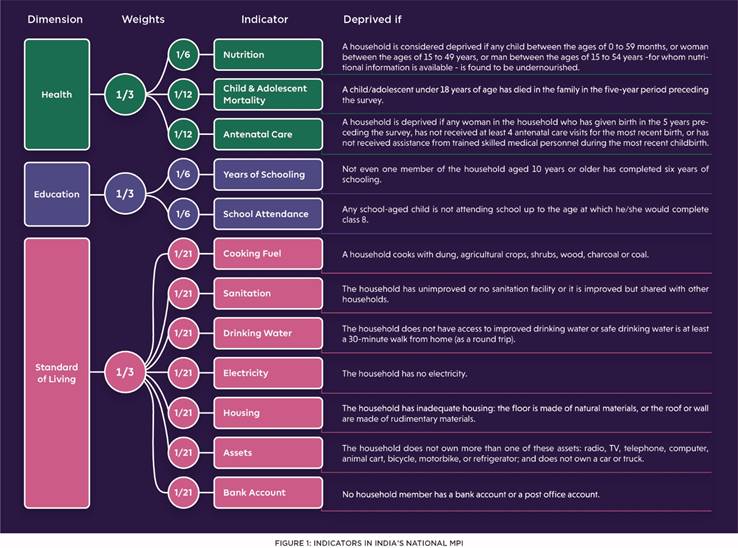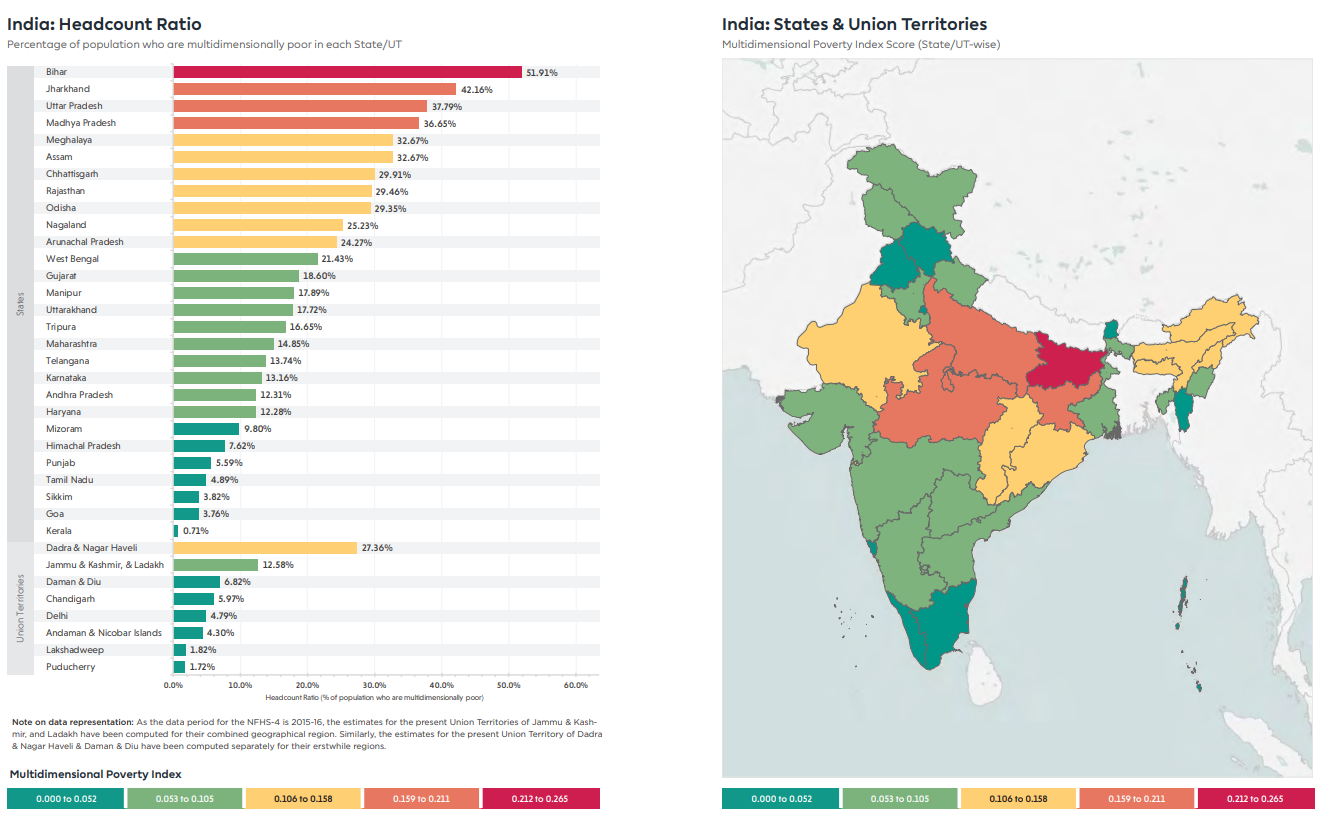National Multidimensional Poverty Index
National Multidimensional Poverty Index
Under the Cabinet Secretary’s Global Indices for Reforms and Growth (GIRG) initiative, the country’s performance is being monitored across 29 global indices including Human Development Index (HDI), Global Hunger Index (GHI), Global Competitiveness Index (GCI), Human Capital Index (HCI), Global Innovation Index (GII), among others. Multidimensional Poverty Index (MPI) is one of them.
This exercise is aimed at leveraging the monitoring mechanism of important social, economic, and other internationally recognised indices, enabling the utilisation of these indices as tools for bringing about reforms to improve outcomes and correspondingly reflect them in India’s performance in these indices globally.
Purpose of MPI
According to Global MPI 2021, India’s rank is 66 out of 109 countries. The National MPI Project is aimed at deconstructing the Global MPI and creating a globally aligned and yet customised India MPI for drawing up comprehensive Reform Action Plans with the larger goal of improving India’s position in the Global MPI rankings.
Role of NITI Aayog
NITI Aayog is the nodal Ministry for the Multidimensional Poverty Index (MPI). NITI Aayog is also responsible for engaging with the publishing agencies of the index (Oxford University’s Oxford Poverty and Human Development Initiative (OPHI) and United Nations Development Programme (UNDP)).; ranking States and Union Territories based on their performance and has also constituted an inter-ministerial MPI Coordination Committee (MPICC) to consult twelve Line Ministries mapped to each National MPI indicator.
Framing of National Multidimensional Poverty Index
Baseline for MPI
The Baseline Report of MPI is based on the National Family Health Survey (NFHS) 4 taken up during 2015-16. NFHS is conducted by the International Institute for Population Sciences (IIPS) under the Ministry of Health and Family Welfare, Government of India.
NFHS 4 (data period: 2015-16), precedes the full roll out of flagship schemes on housing, drinking water, sanitation, electricity, cooking fuel, financial inclusion, and other major efforts towards improving school attendance, nutrition, mother and child health, etc. Hence it serves as a useful source for measuring the situation at baseline i.e. before large-scale rollout of nationally important schemes.
The progress of the country with respect to this baseline will be measured using the data of the future NFHS.
The Baseline Report is a contribution towards measuring progress towards target 1.2 of the Sustainable Development Goals (SDGs) which aims at reducing “at least by half the proportion of men, women and children of all ages living in poverty in all its dimensions”. Across three dimensions of health, education and standard of living, it includes indicators on nutrition, child and adolescent mortality, maternal care, years of schooling, school attendance, cooking fuel, sanitation, drinking water, electricity, housing, bank accounts and assets.
Baseline MPI: Dimensions, Indicators and Findings
Dimensions and Indicators
India’s national MPI captures multiple and simultaneous deprivations faced by households across the three macro dimensions of health, education and living standards. The National MPI dimensions, indicators and weights are given below:

Findings

To read the complete report, click here.
Source : NITI Aayog
Last Modified : 12/6/2022
